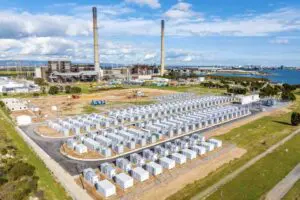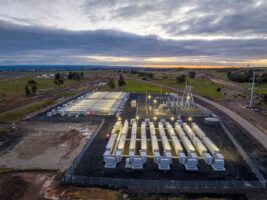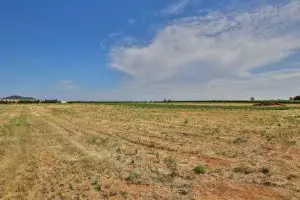The Tesla big battery in South Australia – officially known as the Hornsdale Power Reserve – is about to get significantly bigger, according to sources and videos floating about on social media.
The Hornsdale Power Reserve is already the world’s biggest lithium-ion battery in the world – 100MW/129MWh – and has performed so well in boosting power security and lowering prices that it has changed much of the thinking about the future of the grid.
Video posted on the Youtube channel HyperChange shows two large road trains, each said to be carrying 18 Powerpacks – the Tesla product used in the Hornsdale Power Reserve. It now emerges that the video first appeared on the Twitter feed of a truck driver a week ago.
According to HyperChange, there are 37 such deliveries, indicating that up to 500 Powerpacks may be delivered to the site, adjacent to the Hornsdale wind farm north of Adelaide. The video also shows new site works at Hornsdale, taken from Google Maps, although that doesn’t yet look big enough to accommodate such as array.
Some sources suggested a potential expansion of the Hornsdale Power Reserve of around 50 per cent, or more, depending on the configuration chosen.
Neoen would not comment on the development, and Tesla did not respond to queries.
The mystery is enhanced because there appears to be no visible regulatory application for an expansion to the project, not with the South Australia regulator, not with the state planning department, and not with the Australian Energy Market Operator.
That led some on social media – where Tesla has plenty of critics and skeptics – to speculate whether they were “replacements” for batteries already depleted by the efforts of Hornsdale to date. RenewEconomy understands this is not the case.
 The Tesla big battery at Hornsdale has been used in multiple roles – as an emergency back-up for the state government, providing Frequency Control and Ancillary Services, and playing in the spot market by charging at low prices and selling at high prices.
The Tesla big battery at Hornsdale has been used in multiple roles – as an emergency back-up for the state government, providing Frequency Control and Ancillary Services, and playing in the spot market by charging at low prices and selling at high prices.
It has significantly reduced costs in the FCAS market by breaking apart an existing gas cartel, helped keep the lights on when a lightning strike caused widespread outages in other parts of the grid, and also generated significant returns for Neoen through its activities.
Its success has led to the deployment of another four big batteries in Victoria and South Australia, with many more planned in different states, with the most recent announcement from AGL agreeing to contract 200MW/400MWh of battery storage in NSW, partly to replace the ageing Liddel coal generator that will be closed in 2023.
Despite this obvious success, the idea that battery technology might be useful remains beyond the federal Coalition government. Prime minister Scott Morrison has absurdly compared it to the Big Banana, resources minister Matt Canavan compares it to the Kardashians, and this week Liberal moderate Jason Falinski claimed the technology “does not exist.”
Tesla founder Elon Musk has predicted that the energy division that includes storage will eventually overtake the electric vehicle division of the company. Tesla also unveiled a new “mega-pack” product that provides 3MWh of storage, but while this is about to be deployed in a couple of projects in California, it is not believed to be planned for Hornsdale.










